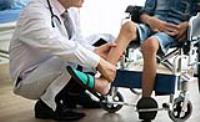 Add My Company
Add My Company
Sign In
Muscular Dystrophy: The Different Variants
24-02-2021

Muscular dystrophy is an inherited genetic condition that causes the muscles to weaken over time. A progressive condition, it leads to an increasing level of disability. In the UK, around 70,000 people have MD today.
There are several different types of muscular dystrophy. Often, it begins by affecting a specific group of muscles and goes on to affect the muscles more widely.
What causes muscular dystrophy?
Muscular dystrophy runs in families in most cases. The genes responsible for muscle structure and function mutate, so the cells that maintain the muscles can no longer do so. Progressive disability follows, caused by muscle weakness.
If one or both parents have the MD gene, it can be passed to the children. A person has two copies of each gene, except for the sex chromosomes. You inherit a copy of your genes from each parent. This is why you can inherit MD, even if only one parent has the mutated gene.
In a few cases, a genetic mutation can also develop as a new condition in the family, known as a spontaneous mutation, although this is far rarer.
What are the types of muscular dystrophy?
An inherited condition that affects mainly boys, the most common type is Duchenne muscular dystrophy. If a girl is affected, it is a milder form of MD. An affected child will develop symptoms between one and three years old. The condition shortens the lifespan and people with Duchenne MD usually live only into their 20s or 30s.
About 100 boys in the UK are born with Duchenne MD every year. Currently, around 2,500 people in the UK have this type of MD. The reason it is more prevalent in boys is because of the genes – the dystrophin gene that causes the condition is on the X chromosome.
While girls have two X chromosomes, boys have only one. This means girls are less prone to the condition because they almost always have a working dystrophin gene on one of their two X chromosomes.
Becker MD is closely related to Duchenne MD, but it is less severe and develops in later childhood. It does not affect life expectancy as severely as Duchenne.
Facioscapulohumeral MD progresses slowly and is not normally life-threatening. It can also develop in adulthood.
Emery-Dreifuss MD develops in childhood or as a young adult. Most people who have this condition will live to middle age or beyond.
Myotonic dystrophy can develop at any age and people with the condition may have a shorter lifespan, although it is not always adversely affected.
A group of conditions normally developing in later childhood and early adulthood, limb-girdle MD has several different variants. Some develop slowly, while others may progress quickly and become life-threatening.
Oculopharyngeal MD doesn’t normally develop until the person is between 50 and 60. It usually doesn’t affect life expectancy.
Some types of MD that affect the muscles used for breathing, or the heart, can be life-threatening.
Is there a cure for muscular dystrophy?
Currently, there isn’t a cure for MD, although treatment can manage most of the symptoms.
Physiotherapy can help to maintain muscle strength, preserve flexibility and prevent joints from becoming stiff. Useful physical aids include leg braces, crutches or a wheelchair to help people stay mobile.
If the chest muscles are weakened and can’t control breathing properly, machines are available to assist with breathing and reduce coughing. This can be particularly useful while sleeping.
How does MD affect sleeping?
While breathing problems can be a problem, causing sleep apnea, pain is a common challenge for people with muscular dystrophy. This can contribute to problems with falling asleep and staying asleep.
Anxiety can cause the mind to start racing. This can lead to people having less sleep, leaving them tired the next day and in general. Poor night-time slumber can also be caused by limb movements during sleep.
Certain beds or mattresses can provide extra comfort for people with muscular dystrophy, helping them to sleep and in some cases reducing the need for assistance during the night.
The Stellan complex care system has many benefits, including profiling the head section to aid respiration. It also features electric height adjustment for extra safety and a knee-brake to help prevent the user from sliding down the bed.
The Dali electric nursing bed includes pressure-relieving mattresses to aid comfort, and a profiling mattress base so the user can move more easily into a different sleeping position. The back, height and upper leg rest are all adjustable electrically and its extra-high sides protect the user from falling out of bed during the night.
Are there any new discoveries from research trials?
Research is continuing all the time into improved treatment and hopefully a cure for muscular dystrophy. On 8th January 2021, Pfizer announced it had commenced Phase 3 CIFFREO clinical trials. They are testing the safety and efficiency of a potential gene therapy drug, PF-06939926, to treat Duchenne MD.
The research is being carried out by scientists in Barcelona, Spain. The CIFFREO trial spans 15 countries and involves boys aged four to seven with Duchenne MD who can still walk. Pfizer will publish its findings later on the success of the clinical trials.
For more information on Muscular Dystrophy: The Different Variants talk to Kinderkey Healthcare Ltd
Enquire Now
List your company on FindTheNeedle.

